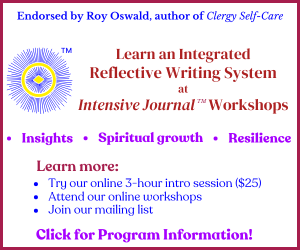Resource Reviews for October 2020:

Chaplains as Partners in Medical Decision-Making
Editors: M. Jeanne Wirpsa and Karen Pugliese (London and Philadelphia: Jessica Kingsley Publishers, 2020, 238 pages, paperback, Kindle Ebook)
Jeanne Wirpsa and Karen Pugliese have edited a volume of case studies that could be beneficial for just about any chaplain. We know that patients and care teams increasingly involve chaplains in the medical decision-making process. But we have much to learn about what specific interventions that involvement entails. Inspired by other recent chaplain case study volumes, this book aims to further our understanding with a close reading and analysis of nine different cases.
As technology develops, medical options multiply, and global communities become more diverse, both patients and their care teams face increasingly complex choices. In addition to the nine cases, they include six responses from a range of interdisciplinary team members. Their hope in publishing these cases is to inspire every chaplain to reflect on the crucial role they have in helping patients “clarify values and beliefs impacting treatment options” (18). That clarification happens just as much in the intensive care unit (ICU) as it does in an outpatient clinic or a critical access hospital–where, for example, a decision might be made about whether not to pursue a more aggressive level of care.
I found the book instantly rewarding. For example, I was recently asked to follow up with a patient in an ICU due to the fact that she is struggling with a decision about her “code status,” or whether or not to have cardiopulmonary resuscitation if her heart were to stop (again!). I began my conversation by telling her I knew she was facing a big decision. This being my first time meeting her, I made it clear from the beginning that my job was not to guide her towards one decision or another, but to give her a chance to think out loud about the things that help her to make a decision. Wirpsa and Pugliese’s book gave me the confidence to approach that conversation and the skills to frame my intervention from the outset.
The “knock” on case studies is that they are not necessarily generalizable. For example, I was interested in an intervention described in Chaplain Galchutt’s case study “Keith’s Story.” Over the course of multiple visits, Galchutt leads the patient in a Mutual Expressive Writing (MEW) intervention. I have recently identified numerous patients who I thought would be ideal candidates for MEW. I have yet to be successful in even doing the first session. That particular intervention just doesn’t seem suited to my clinical context–though I had assumed it would be.
Ultimately, one can argue that, despite their limited generalizability, case studies still deliver benefits to those who study them, because they inspire dialogue and further research. The editors state in the introduction that some of the goals of publishing case studies is to “invite debate” and “consider what kind of research questions these studies raise” (19, 28). It certainly has given me more ideas for interventions and research than I know what to do with.
Reviewed by Paul Goodenough MDiv BCC, Palliative Care Chaplain, IU Health Methodist Hospital, Indianapolis, IN
Downcast: Biblical and Medical Hope for Depression
Jennifer H. Harris, Harold G. Koenig and John R. Peteet (Bristol, Tennessee: Christian Medical & Dental Associations, 2020, 258 pages, paperback)
Coping with the pandemic challenges us all to be on the lookout for depression in ourselves, our loved ones, our co-workers and those to whom we are providing spiritual care. Three Harvard-based psychiatrists offer a book “for those who struggle with depression and for those with loved ones with depression, as well as for pastors, doctors, clinicians, counselors and those in ministry” (7). Divided into three parts (Understanding Depression, Strategies and Living with Depression) of four chapters each, it also includes occasional case studies, end notes after each chapter, an appendix of suggested reading and an index.
In Part 1, after an Introduction, they explore Definitions, then Causes, and then Myths and Misconceptions, especially those that oversimplify depression as solely a medical problem or a lack of Christian faith problem. Part 2 presents numerous Strategies to address depression with chapter titles of Body, Mind, Spirit and Environment. After surveying most of the secular therapies (highlighting the efficacy of cognitive-behavioral therapy) and explicitly Christian theories of counseling, they acknowledge that amongst Christian counselors the “integrative counseling view” predominates. It “places the Bible and psychology on equal footing” wherein the “Bible provides the Christian worldview and theology, and psychology provides the science and practice of counseling” (131). A survey of the roles of mental health professionals includes a lengthy discussion of the role of an informed pastor.
The first chapter of Part 3, Despair, addresses chronic and severe depression, psychiatric hospitalization options and suicide. They address the question of whether or not suicide is an unforgiveable sin: “While suicide is a tragedy, it would be undermining Christ to consider suicide a sin outside the purview of God’s grace and forgiveness, particularly when the act was performed by someone with a mental illness (depression or severe suffering) that interferes with their ability to weigh evidence and make competent decisions” (208).
New to me was “a Ulysses Contract or a psychiatric advance directive” which is “a legal document that describes a person’s plan for when they experience a mental health crisis” (196). (For more information see www.nrc-pad.org.) The Love chapter provides strategies “as to how friends, family and churches can best care for those who are depressed” (212). Included is a welcome challenge to churches to better prepare Christians for the realities of suffering. In Faith, they explore the gifts that may result from healed depression: a more honest and realistic approach to life, focus on a problem too long ignored, realignment of values, greater compassion for the suffering of others, and a deeper acceptance of God’s grace. They conclude with a meditation on Hope.
Frequent Biblical citations and theological language common amongst evangelical Christians suggest that the intended audience is primarily faith community members and leaders who have difficulty understanding depression as a disease and a medical problem. For them, including an evangelical Christian entering a CPE residency, it could be very helpful in moving them toward a more holistic approach. For those already sold, they provide an excellent opportunity to update one’s knowledge about recent developments in the psychiatric treatment of depression including a comprehensive medication review.
An alternative holistic approach without evangelical Christian theology can be found in Defeating Depression by Howard W. Stone. For a deeper dive into the spiritual causes and treatment of depression see Pastoral Care of Depression by Glendon Moriarty. Hope in Pastoral Care and Counseling by Andrew Lester is also recommended.
Reviewed by Roy F. Olson DMin, a retired BCC who specialized in behavioral health chaplaincy.
Spirituality: An Art of Living: A Monk’s Alphabet of Spiritual Practices
Benoit Standaert, OSB, Translator Rudolph V. Van Puymbroeck (Collegeville, MN: Liturgical Press, 2018, 409, ebook, hardcover)
The author is a Benedictine monk (OSB=Order of Saint Benedict), an order that follows the Rule of St. Benedict, which has guided formal and more loosely-structured communities of faith from the sixth century through today. Benedict created a guidebook to order the day of the faithful, centered on prayer and work in addition to peace in community. This guide helps believers work toward the goal of deepening spirituality—connection with God and harmony within community—through increasing development within spiritual practices.
As a monk at Andrew’s Abbey in Bruges, Belgium, Fr. Standaert is, of course, deeply familiar with and rooted in Christian spiritual practices. He teaches Scripture, spirituality, and interreligious dialogue and has a PhD focused on “the composition and literary genre of the Gospel of Mark” (right book jacket). As he lamented the decreasing number of “religious” in the monastic communities around him, he also saw a thirst for a closer connection with God among lay people and realized spiritual practices from the monastic tradition could help. Standaert states, “ . . . this book addresses itself to all who recognize that yearning in themselves and who are willing to go looking. Passing on the ancient monastic treasure to lay people is my purpose for this book “ (xvi). His intended audience is “believers and nonbelievers, the churched and the unchurched” (xv).
Standaert hopes that this text will help readers who are searching to realize the “art of living” that spirituality can imbue. As he explains, “. . . spirituality is the cultivation of an art of living that through the application of concrete practices gradually works a transforming effect. . . . the transformative process leads to freedom, to beauty . . .” (xiv). He quotes the Zen master Rikyu, who remarked as he described the elaborate Japanese tea ceremony, “Life is impossible. Let’s do something feasible well. Maybe then life is possible after all?” (xiv). Standaert suggests that “maybe we can take on life, in all its cluttered complexity, if we start with such simple feasible things [as spiritual practices], executed with perfection. . . . I myself am responsible for the rightness of my life here and now. And if I do it right, I can stop worrying: the whole world will benefit, even the fish in the ocean and the stars in the sky” (xv). Isn’t that a bold endorsement for successful spiritual practice!
The book is organized by the Roman alphabet (26 letters), which is used in Dutch, with 99 entries, a deliberate ending point. As Standaert explains, “It comprises ninety-nine different practices or entrance gates to the spiritual life—just short of one hundred! The one gate that is missing exists beyond the last page, in life itself and is different for everybody—unpredictable, a true surprise!” (xv). The reader can choose where he or she wants to begin. Cross references suggest connections between spiritual practices in separate entries, “illustrating how the different practices fit together and form a philosophy of life” (xvi). . . Each letter provides only a door or a window; all letters together give access to the living space of a grand spiritual home, an area with room to breathe and with place for many” (xviii).
Although the entries are often spiritual practices in the Christian tradition, he provides many examples from other traditions; spiritual traditions from other faiths are also included as entries. Some entries that may surprise the reader. For example, the section under letter D contains the following: dancing (dance your life!), death (following St. Benedict’s admonishment to “keep your eye on death every day”), detachment (from worldly goods, to deny oneself, to detach from detachment!), Dhikr (a Muslim prayer practice), dialogue (truly knowing the other and listening with love), and dreaming (including Freudian thought as well as rabbinical tradition). I was surprised by “Salmon, Mocking Gravity,” “Measure and Beyond Measure,” “Form and Formlessness,” and “Zero.” You can view the contents page and read his interesting preface, from which I have drawn a number of quotations above, on Amazon at https://www.amazon.com/gp/product/B07B6P93D5?pf_rd_r=D3XJK3A6VR49ZVMGY3DE&pf_rd_p=edaba0ee-c2fe-4124-9f5d-b31d6b1bfbee; use the “Look Inside” function. The depth of the entries reveals Standaert’s extensive education both within and outside of the monastic tradition.
This text would be helpful as a devotional, reading an excerpt daily or once a week. It can be dipped into from time to time to provide some spiritual kernels to chew on. A spiritual practice could be studied and practiced as a Lenten ritual or during some other religious holiday. Groups could use the book as an entry point to study, discuss, and practice a specific spiritual practice together, and interreligious groups could compare similarities between spiritual practices from their different faith traditions. As a person trained in spiritual direction, I found it to be an interesting and valuable resource.
Reviewed by Tamara R. Flinchum BCC, a chaplain at AnMed Health in Anderson, SC.



